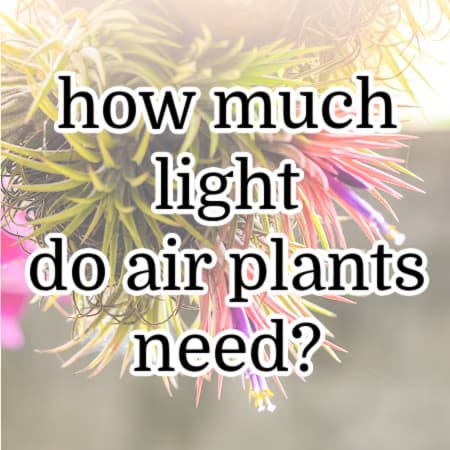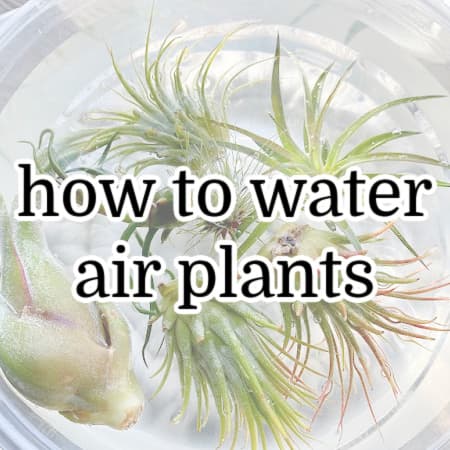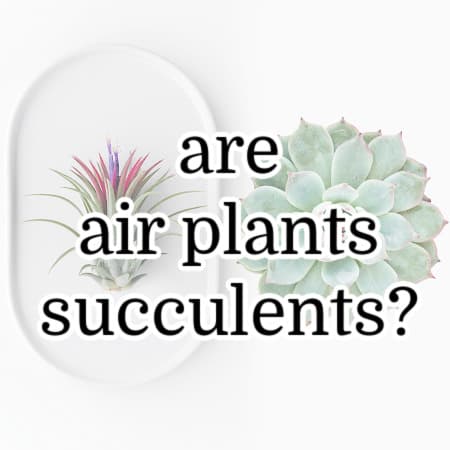Best Succulents for Terrariums (Everything You Need to Know!)
Succulents are a great addition to your indoor garden. They’re low-maintenance and easy to care for, which is why people assume they’ll be perfect for an indoor succulent terrarium.
In this blog post, I’ll explain the best succulents for terrariums (it’s not what you think) and give you all the info you need so you can get started on your own DIY terrarium project!
Pin this to your favorite gardening board on Pinterest!
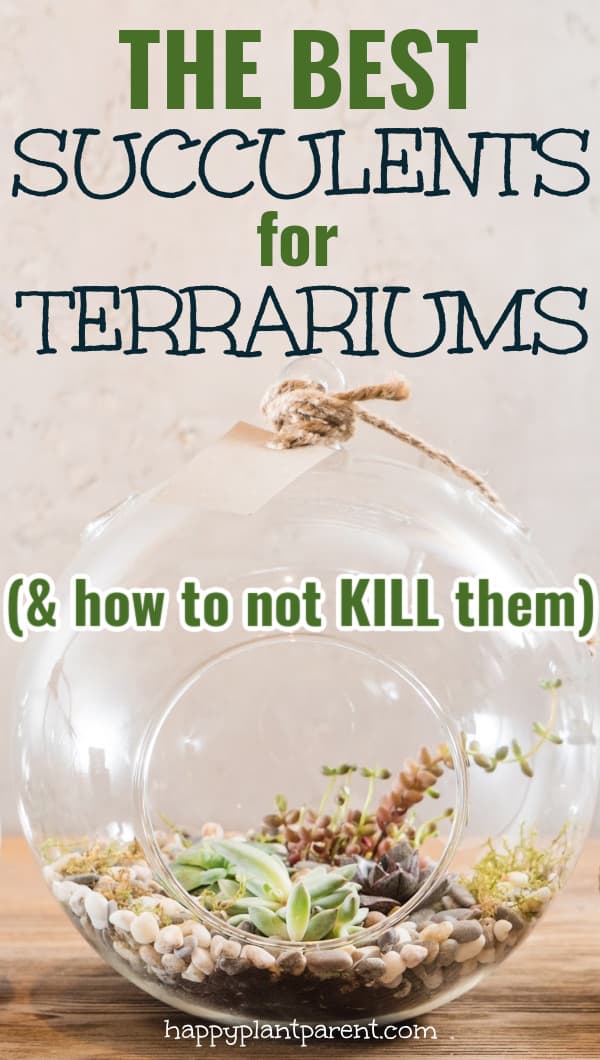
(This post contains affiliate links. If you click one and make a purchase, I may receive a commission at no extra cost to you. Read the disclaimer here. Thank you for your support!)
What You Need to Know About Succulent Terrariums
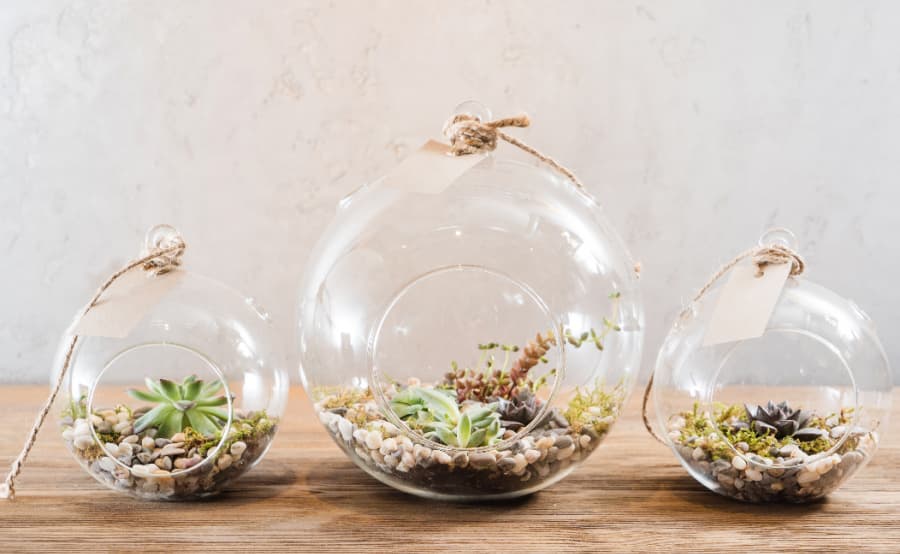
Before we dive into the list of the best succulents for terrariums, there’s something you need to know.
I’m about to get real here.
Honestly, the best succulents for terrariums are fake ones.
There are some other plants, like air plants, that are much better for terrariums then succulents.
I know that’s not what you want to hear, but let me quickly explain why.
Why Succulents Don’t Do Well in Terrariums
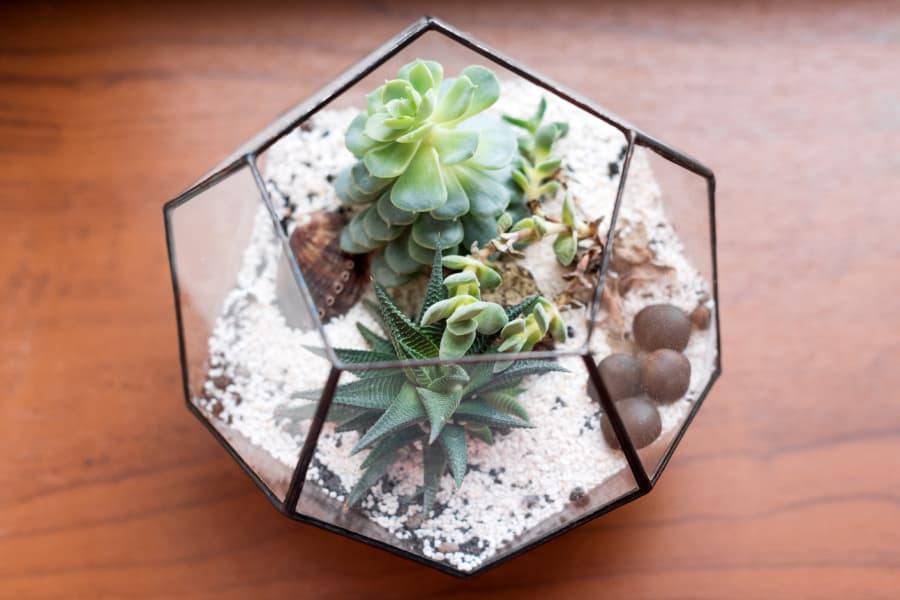
Succulents thrive in a container with adequate drainage, gritty soil, and they love the drench and drain watering method.
That means you don’t need to water them very often, but when you do they want the soil to be completely soaked and allowed to drain freely. Then you’ll need to let the soil totally dry before you water them again.
These conditions are really hard to achieve in a terrarium with no drainage at the bottom. And no, putting rocks and charcoal at the bottom doesn’t provide drainage.
Too much water ends up pooling at the bottom of the container.
You can make temporary succulent terrariums, but if you leave them planted in there they’ll eventually rot because of the lack of drainage.
Or they’ll dry out from not getting enough water at a time.
Or they’ll be sad from the lack of air circulation.
With all that being said, you can still totally make a succulent terrarium, and some plants will be more tolerant to it then others.
Just know it’s best to make it a temporary succulent terrarium arrangement, and switch them out to a pot with drainage holes eventually.
Also, you’ll need to use open terrariums, an enclosed terrarium just won’t work for succulents.
The good news is you can easily propagate new plants with leaves from your existing succulents, so you can have more plants ready for a turn in the terrarium when the older plants are ready to move out!
Best Succulents for (Open) Terrariums
OK, now that we’ve covered that succulents in open terrariums will need special watering techniques and whatnot, let’s take a look at some of the best plants you can use for your open succulent terrarium:
Jade Plant (crassula ovata)
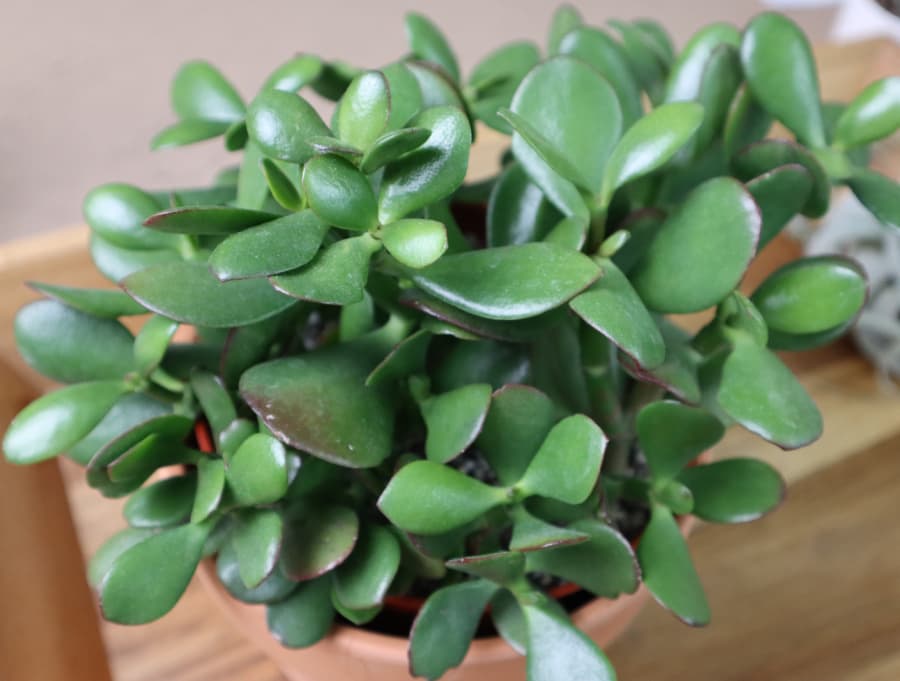
Jade Plants are easy care, slow growing succulent plants that are very easy to propagate. It has a round, thick stem with fleshy leaves that are typically bright green or jade-green in color.
You can make more Jade Plants by unpotting them and dividing the stems, with cuttings, or by propagating the leaves. They’re a super popular choice for an indoor succulent garden.
- Water Needs: Soak soil thoroughly, wait until soil is bone dry to water again
- Light Needs: At least 4 hours of bright, indirect light a day
Zebra Plant
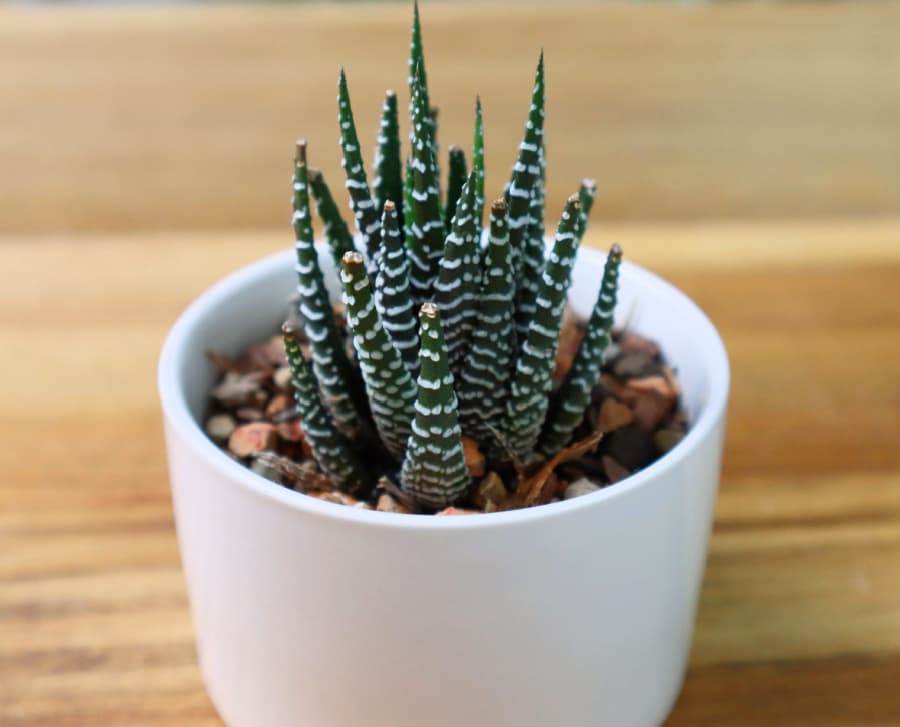
Zebra Plants are a very easy to take care of, neglect tolerant plant and can handle lower light conditions.
They’re somewhat famously hard to kill, as long as you don’t over water them. However, they’ll be happiest with a bit of indirect light each day.
- Water Needs: Soak soil thoroughly, wait until soil is bone dry to water again
- Light Needs: Bright, indirect light to partial shade
Elephant Bush (Portulacaria afra)
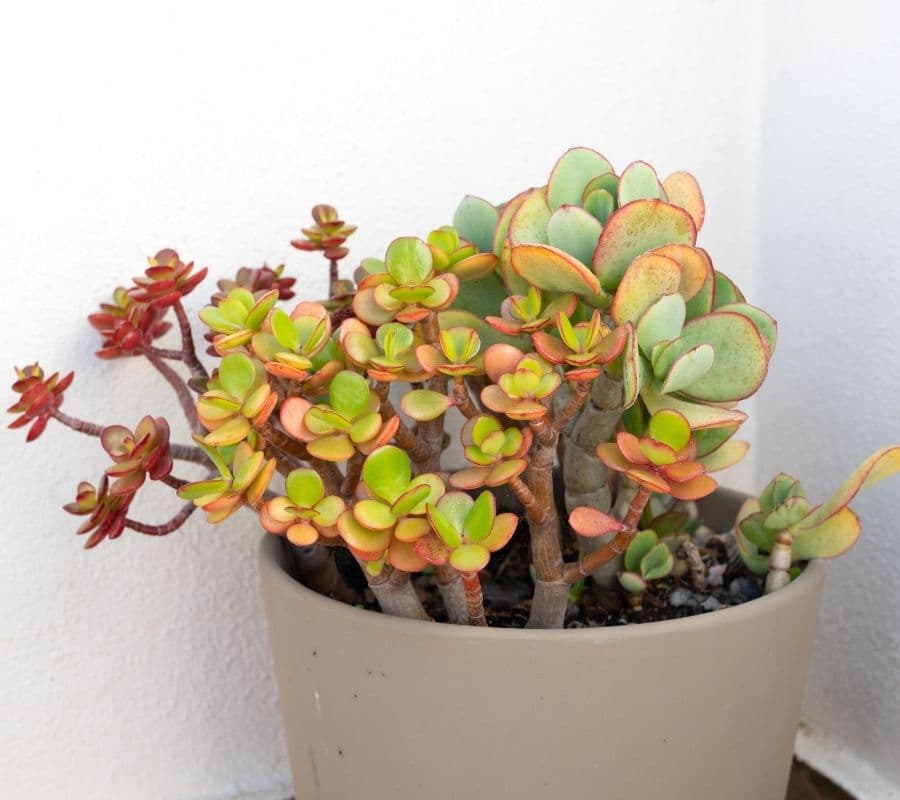
Elephant Bush (also known as Dwarf Jade, although it’s not related to Jade) is an easy to grow succulent that comes in several different colors and varieties such as miniature, variegated, and mammoth.
Its small size and ability to grow in shallow pots makes them perfect for terrariums, so long as they are situated near a window.
They’re very low-maintenance, hardy succulents that are perfect if you don’t have lots of time to devote to your indoor garden.
- Water Needs: Soak soil thoroughly, wait until soil is bone dry to water again
- Light Needs: Bright, indirect light
Paddle Plant
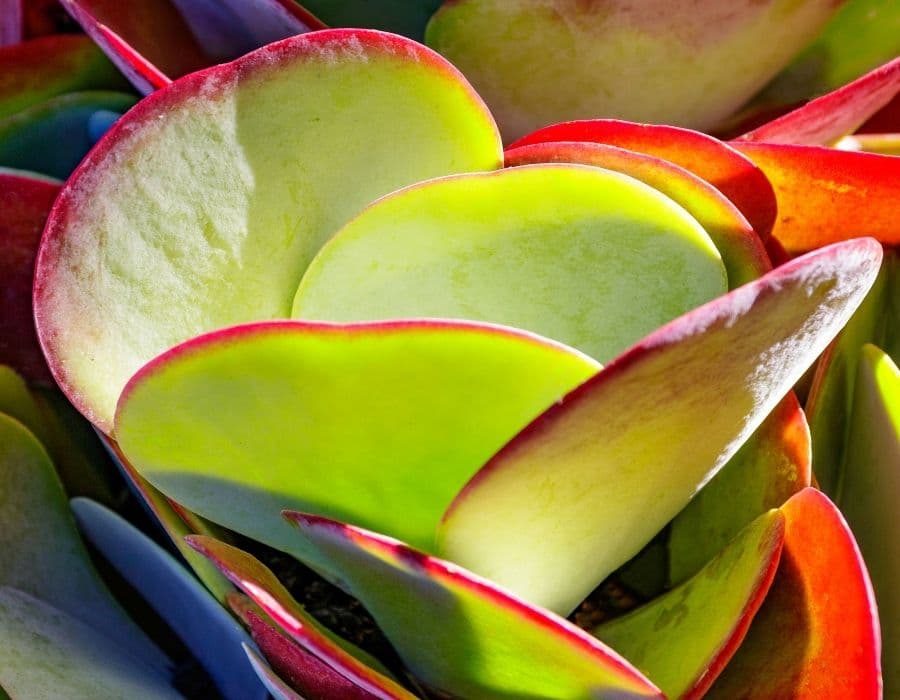
The Paddle Plant is a beautiful succulent with large, paddle shaped leaves with red tingled edges. Mature plants have yellow flowers that blossom in the early spring.
You’ll also see this one called a Flapjack Paddle Plant (for obvious reasons). It’ll add a lot of visual interest to your indoor garden!
- Water Needs: Soak soil thoroughly, wait until soil is bone dry to water again
- Light Needs: Bright, indirect light
Panda Plant
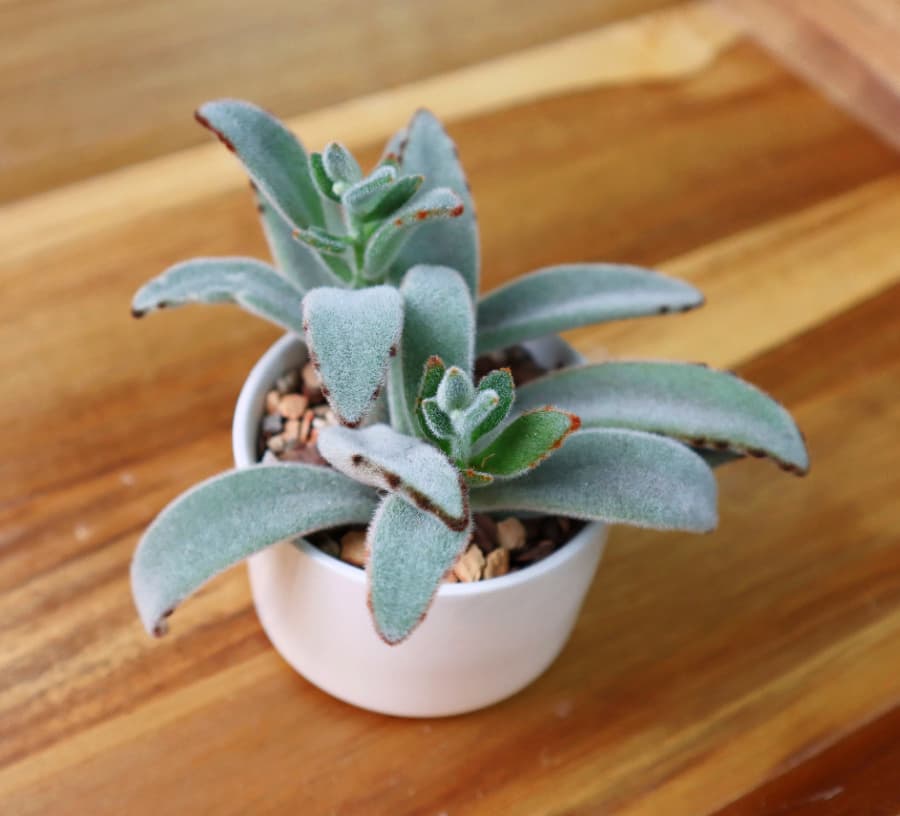
The Panda Plant is one of the cutest succulents you’ll ever come across! It’s easy to care for and so much fun to look at.
It features soft, fuzzy leaves that are oval in shape. The main leaves are a soft blue-gray and the edges are brown. It’s a beautiful succulent that can survive for many years with proper care.
- Water Needs: Soak soil thoroughly, wait until soil is bone dry to water again
- Light Needs: Bright, indirect light
Pincushion Cactus
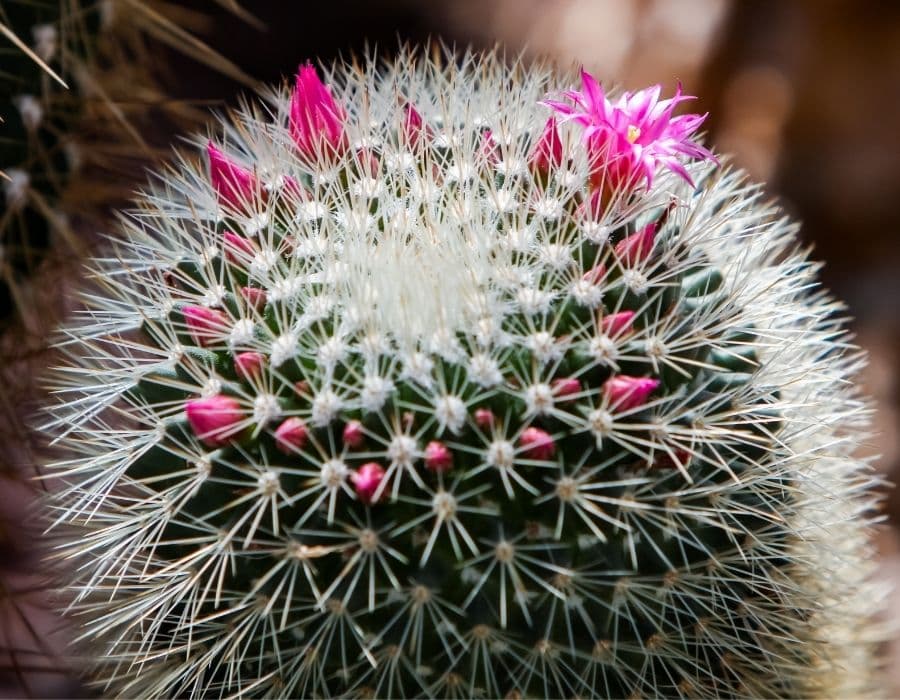
If you want to try something a bit more prickly, the Pincushion Cactus is a great choice for your terrarium. This cactus will grow slowly over time and become a beautiful focal point for your indoor garden.
They’re low maintenance, and when they reach adulthood they’ll form pups, or baby plants, that you can trim off and repot to grow a new plant!
- Water Needs: Soak soil thoroughly, wait until soil is bone dry to water again
- Light Needs: Bright, indirect light
Aloe Vera
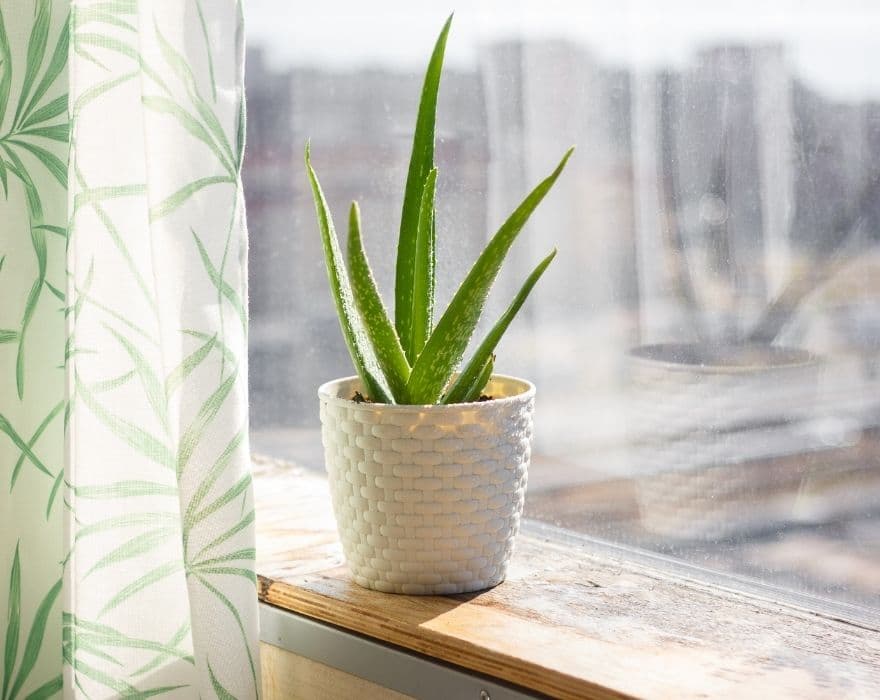
Aloe Vera is a great plant to have for any indoor garden. It’s easy to care for, has healing properties, and it looks lovely in your home.
Make sure you don’t over-water your Aloe, it won’t last long if you do. Otherwise, it’s super easy to keep it happy!
- Water Needs: Soak soil thoroughly, wait until soil is bone dry to water again
- Light Needs: Bright, indirect light
String of Pearls
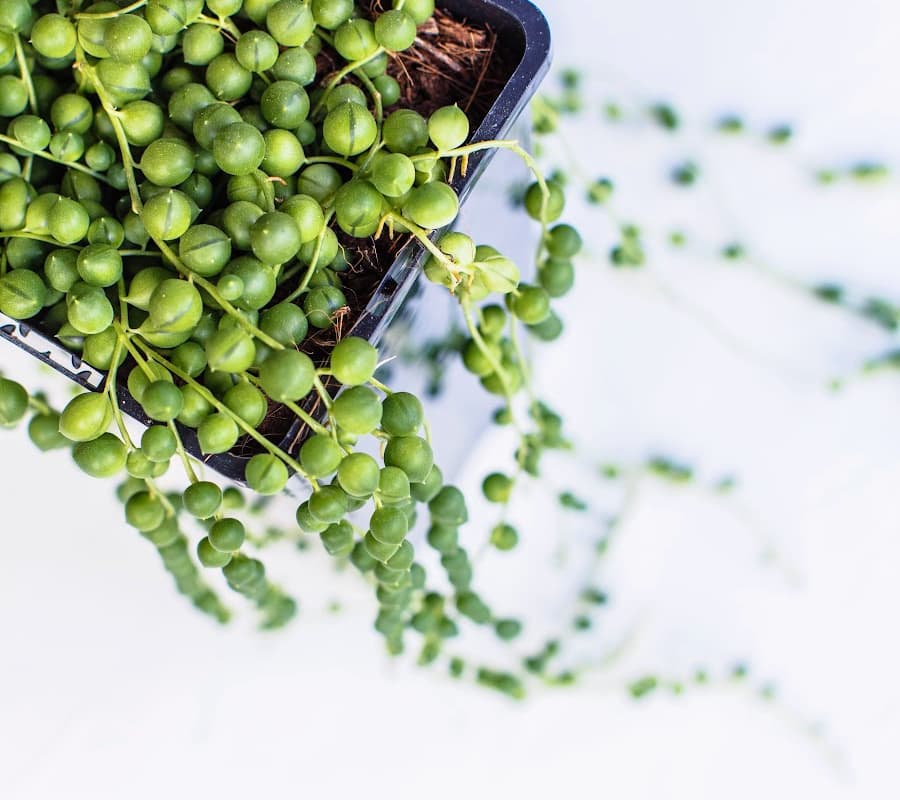
String of Pearls is a beautiful plant with a bit of a reputation for being a diva. It’s actually quite easy to take care of, but it has no tolerance for the wrong amount of water or slow draining soil.
Keep an eye on the little pearl shaped leaves. If they start to shrivel, it needs more water. Mine actually likes being watered once a week, and sometimes more!
The gorgeous pearl shaped leaves will drape down as it grows, so it makes a perfect succulent for hanging pots and terrariums.
- Water Needs: Soak soil thoroughly, wait until soil is bone dry to water again
- Light Needs: Bright, indirect light
How About Some Fake Succulent Plants?
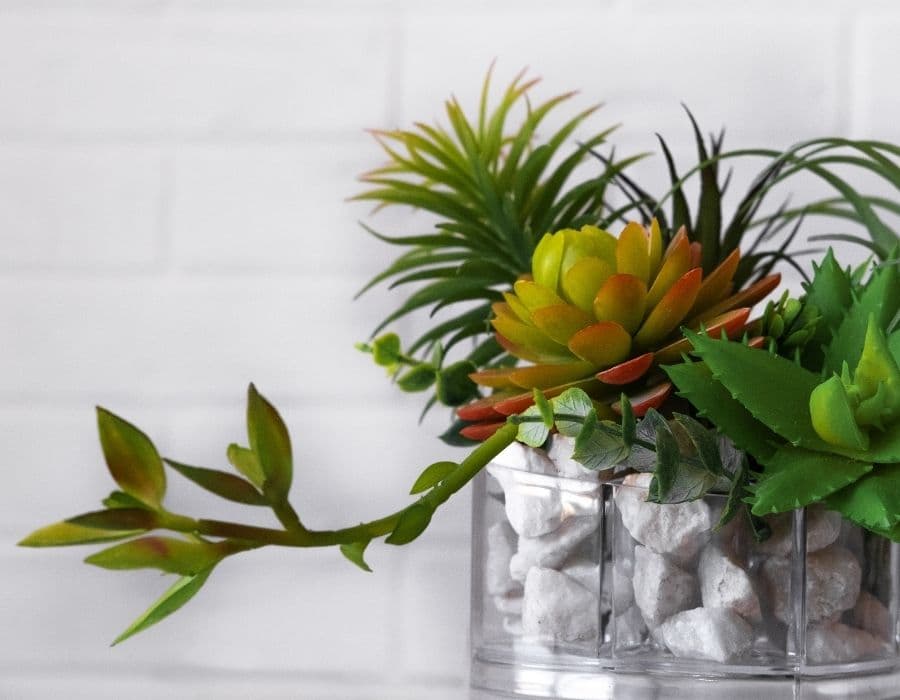
Believe it or not there are some really good looking fake succulents that you can buy to put in a terrarium, and it doesn’t get much easier than zero care!
If you go that route, you can use whatever sand, moss, rocks, crystals, etc. that you want and make it look really beautiful without worrying about the health of your succulents.
This is also a good idea if you want to create a sealed terrarium.
Faux succulents are a great option for people who want to make their own terrarium, but don’t have the time (or space) to grow real succulents.
You can get a unique look the easy way without having to worry about excess water, proper drainage, or any of the other stuff that comes along with keeping healthy plants.
Can you put succulents in a closed terrarium?
No, no, no… the high humidity and lack of airflow will doom your succulents to a quick, sad death.
Save the closed terrariums for baby ferns and other tropical plants that are used to humid environments.
What are Some Other Terrarium Plants?
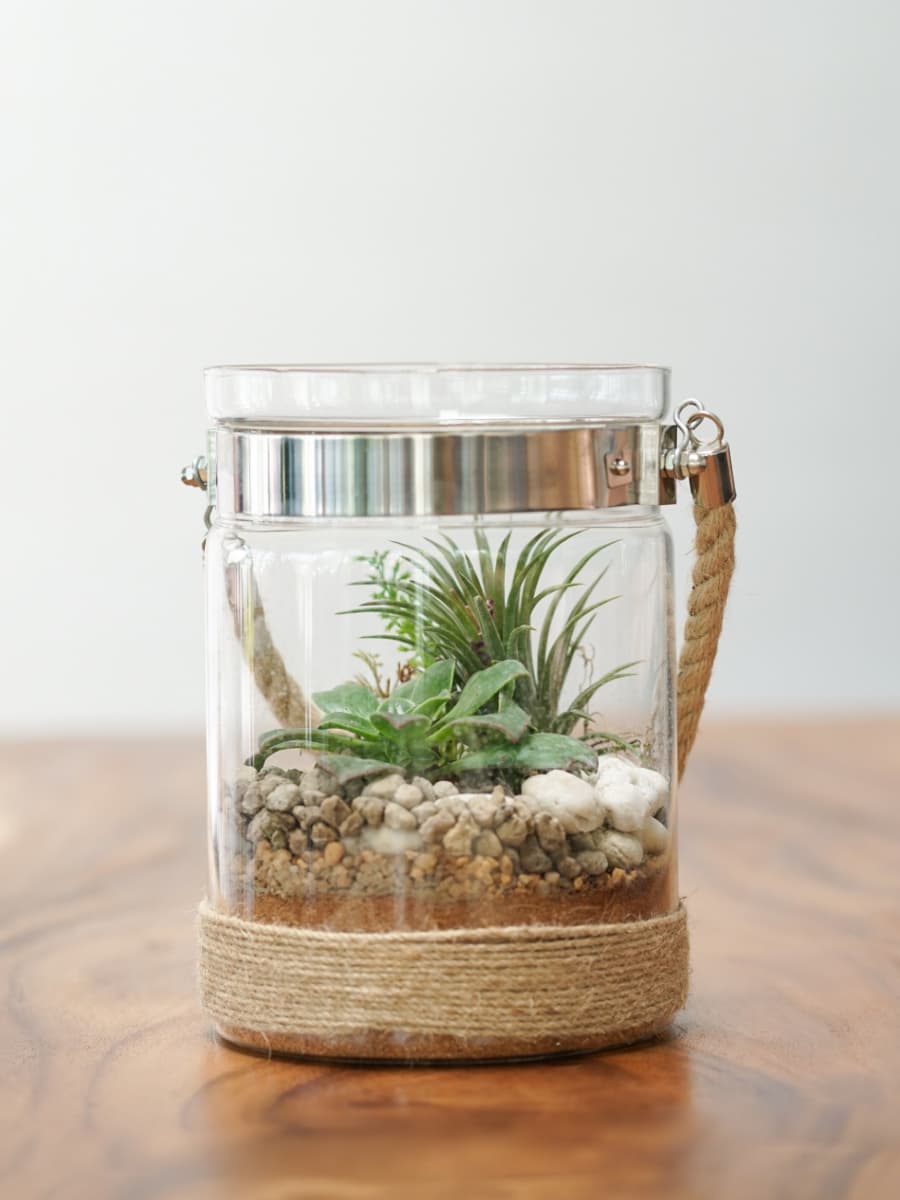
Some other great types of plants for open-top terrariums are:
- Spider Ferns
- Nerve Plants
- Carnivorous plants
- Air Plants
These indoor plants are better equipped to handle the humid conditions and small spaces common to terrariums and are an excellent choice.
Just be sure to do a little research and give them the right conditions and proper care and they’ll make a beautiful addition to your indoor garden!
In Conclusion
I hope you enjoyed this post and got some new ideas and inspiration for your indoor terrarium gardens. What’s your favorite plant to display in a terrarium? Let us know down below!

